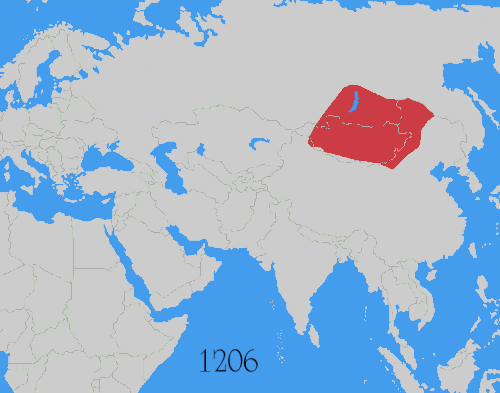| Ruler | Reign | Information |
|---|
| Genghis Khan | 1206 - 1227 | The first Khan of the Mongol Empire. |
| Tolui Khan | 1227 - 1229 | Regent of the Mongol Empire until his brother, Ögedei became Khan. |
| Ögedei Khan | 13 September 1229 – 11 December 1241 | The second Khan of the Mongol Empire. |
| Töregene Khatun | 1242 - 1246 | Regent of the Mongol Empire until the election of her son, Güyük Khan. |
| Güyük Khan | 24 August 1246 – 20 April 1248 | The third Khan of the Mongol Empire. |
| Oghul Qaimish | 1248 - 1251 | Regent of the Mongol Empire until her death in 1251. |
| Möngke Khan | 1 July 1251 – 11 August 1259 | The fourth Khan of the Mongol Empire. |
| Ariq Böke | 11 August 1259 – 12 August 1264 | Claimed the title of Great Khan and fought against Kublai in the Toluid Civil War. |
| Kublai Khan | 18 December 1271 – 18 February 1294 | The first emperor of the Yuan Dynasty. |
| Temür Khan | 10 May 1294 – 10 February 1307 | The second emperor of the Yuan Dynasty. |
| Külüg Khan | 21 June 1307 – 27 January 1311 | The third emperor of the Yuan Dynasty. |
| Ayurbarwada Buyantu Khan | 7 April 1311 – 1 March 1320 | The fourth emperor of the Yuan Dynasty. |
| Gegeen Khan | 19 April 1320 – 4 September 1323 | The fifth emperor of the Yuan Dynasty. |
| Yesün Temür | 4 October 1323 – 15 August 1328 | The sixth emperor of the Yuan Dynasty. |
| Ragibagh Khan | October 1328 - 14 November 1328 | The seventh emperor of the Yuan Dynasty. |
| Jayaatu Khan Tugh Temür | 16 October 1328 – 26 February 1329. (first reign)
8 September 1329 – 2 September 1332 (second reign) | The eighth emperor of the Yuan Dynasty |
| Khutughtu Khan Kusala | 27 February 1329 – 30 August 1329 | The ninth emperor of the Yuan Dynasty. Seized the throne from Jayaatu Khan Tugh Temür. |
| Rinchinbal Khan | 23 October 1332 – 14 December 1332 | The tenth emperor of the Yuan Dynasty. |
| Toghon Temür | 19 July 1333 – 10 September 1368 | The eleventh emperor and last emperor of the Yuan Dynasty. Also the first emperor of the Northern Yuan Dynasty. |





